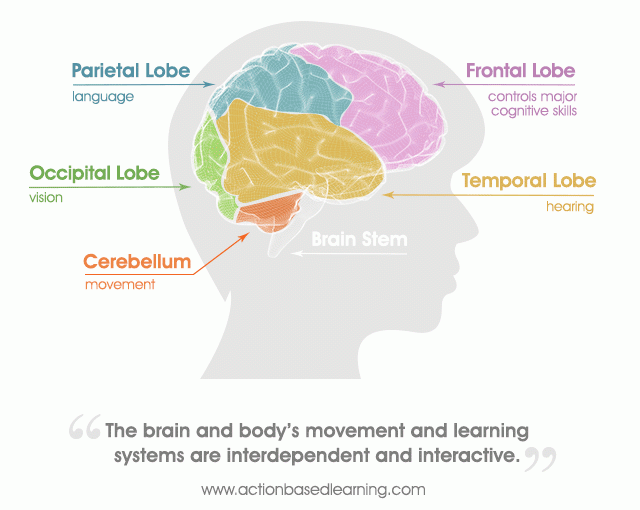
This is the first in our new series on scientific concepts that explain why standing and moving leads to greater health and mental focus, in the classroom and the workplace.
The part of the brain that processes movement is the same part of the brain that processes learning. Peter Strick and his staff at the Veterans Affairs in Syracuse, NY have traced a pathway from the cerebellum back to parts of the brain involved in memory, attention, and spatial perception. Our brain predicts – or thinks about – our movements before we execute them so that we control them better. Motor activity is preceded by a quick thought process that sets goals, analyzes variables, predicts outcomes and executes movements. This requires widespread connections to all sensory areas of the brain.
Ordinary, non-disruptive activity – such as standing and shifting weight slightly – plays a major role in maintaining body weight, caloric intake, overall health. In addition, low-level movement also ensures better brain function.
For more information about movement and thinking, check out research on the science of sitting and standing.




The timing of this grant opportunity is perfect, since our entire school district has been recognized as one of the Texas Healthiest Schools under the Alliance Generation for Healthy Schools. As an active Team member, our school received the Bronze Award for promoting healthy practices with emphasis in physical activity, eating healthy, and drinking water, etc. These desks will allow students to stay focused, engage in active learning, tone their muscles, and improve their posture.
Mission High School is currently under major construction and renovation of our campus, our students are having to walk long distances to get to class. As a Health Teacher, I see this as advantageous for students to get their daily form of exercise. The benefits of these desks would increase awareness as to proper skeletal alignment, to help prevent curvature of the spine, and a “hunch back” look due to improper sitting or standing. This awareness would allow the student to practice proper body stance, proper body alignment, and increase better circulation of blood flow by instilling a “Happy Heart a Healthy Body Concept.”
Congrats on becoming a Texas Healthiest School Bronze Award winner! As you say, active classrooms are a great way to instill a “Happy Heart and Healthy Body Concept.”